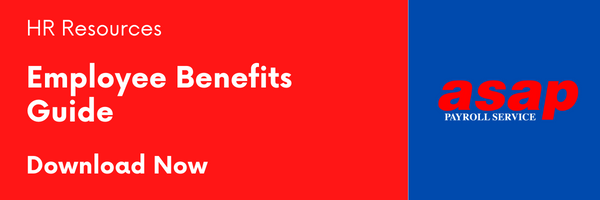
The open enrollment window for 2020 marketplace coverage starts November 1, 2020 and runs for 45 days through December 15. Open enrollment is when your employees can start, stop, or change marketplace and individual health insurance plans. If they miss this enrollment window, they’ll have to wait until late 2021 to make adjustments. However, in terms of employer-sponsored health insurance, revision dates depend on the employer, but generally occur in the fall.
COVID-19 Changed Everything
Since COVID-19 reared its ugly head earlier this year, many businesses have propelled their employees into the virtual workplace. Gone are the days of on-site enrollment meetings, benefits fairs, and on-site vendor support. Thus, it’s easy for employees to forget about open enrollment or put it on the back burner. However, this is the time that effective virtual benefits guidance is more important than ever.
With the coronavirus pandemic forcing employees into their new virtual workplaces, their health and financial wellness are top of mind. However, the world of benefits isn’t the easiest to navigate, and it’s vitally important that employees receive the most comprehensive information possible so they can make well thought-out decisions as everyone moves forward.
Stress the Importance of Open Enrollment
One of the biggest challenges to employees submitting their open enrollment paperwork is not understanding their options. Often, they’ll find the choices confusing, and they can feel overwhelmed and paralyzed by the decisions they have to make. In this case, taking no action can be detrimental.
COVID-19 has pushed everyone into working remotely in the past few months; as a result, we’ve seen firsthand how essential digital tools truly are. Now, HR and Benefits Professionals need to adjust their strategies to ensure that they’re reaching and empowering all of their employees to make right decisions. The best way to do this is by offering benefits decision support, combined with a benefits administration platform.
One way is to offer significant training and information without overwhelming your employees. Frequently, the best way to approach this is to consider providing the information in multiple formats. You can offer e-learning modules that allow employees to learn about their options on their own time in a format that they’re more comfortable with. Webinars are also an excellent alternative and give staff access to important information and provide the opportunity for them to ask questions. Other employees might prefer in-person meetings, especially in organizations with multiple locations. While following safe distancing, your business can send a senior leader to each site to offer instruction and handle questions. Just be sure your leaders are prepared with all of the pertinent information they’ll need to handle your employees’ concerns.
Ultimately, it’s important to choose the right benefits platform for your company’s individual needs. Unfortunately, not all benefits decision support and benefits administration tools are created equal. ASAP Payroll Service can work alongside your benefits provider to create and maintain benefit plan setups, as well as employee benefit elections. They can define eligibility groups and waiting periods, in addition to viewing/approving open enrollment benefit elections.
Accessing benefits enrollment (medical, dental, and vision) right from the employee dashboard makes benefit elections simple for the employee and decreases the amount of time HR has to spend entering employee data.
Health Insurance
Your employees can shop for individual health plans:
- On the federal marketplace or a state exchange via Healthcare.gov.
- By calling the marketplace call center at 1-800-318-2596.
- Directly on an insurer’s website.
- Through a local health insurance broker.
- And get an individual health plan outside of open enrollment, under the following circumstances: if they have had certain life events, including losing health coverage, moving, getting married, having a baby, or adopting a child. This is referred to as a special enrollment period.
- It is highly recommended that your employees consider using the Healthcare.gov website, because tax credits are available, which can help them lower their monthly premiums. These tax credits are only found on the federal marketplace site or a state exchange. Plus, your employees may have 60 days before or 60 days subsequent to the event mentioned above to enroll in a plan.
- And, if an employee’s income is too high, they won’t qualify for tax credits, or if they have a chronic condition and marketplace plans don’t cover their needs, they may need to shop elsewhere for a health plan. This is where a health insurance broker or online health insurance seller may help them find a plan that’s better than those offered on a state or federal marketplace site.
- If you don’t provide minimum standards for coverage and affordability for your employees, they can get premium tax credits for a marketplace plan. Since employers generally pick up part of the bill, your employees could be paying a lot more.
- If your employees fail to buy a plan during the open enrollment period when individual plans are offered, they may become uninsured and, in some states, they might have to pay a penalty. (There is no longer a federal penalty for not having health insurance.)
With the ongoing global pandemic, now, more than ever employees need accurate information so they can make the best choices for their healthcare benefits needs. HDHPs remain an outstanding value; however, employees need comprehensive decision support tools that will help them more fully understand and make better choices related to these plans.
While health insurance is one aspect of an overall benefits package, it’s even more challenging for employees to anticipate, on average, how much healthcare they’ll need. As a result, they’re more likely to purchase higher amounts of insurance than they really need in an attempt to avoid risk and give themselves the false feeling that they’re well-covered. It’s times like these when employees can find themselves paying up to $2,000 more annually than necessary in an effort to buy more peace of mind, when, in reality, there are plans that can provide better coverage without having to outlay that extra cash.
For example, employees will benefit most by enrolling in a High Deductible Health Plan (HDHP) combined with a Health Savings Account (HSA). Frequently, they don’t take advantage of such plans. In turn, this lack of knowledge prevents them from even considering these kinds of plans.
For example, in 2018, Willis Towers Watson, a leading global advisory, broking, and solutions company surveyed employees related to their attitudes toward Health Savings Accounts (HSAs) and Flexible Spending Accounts (FSAs). The survey targeted 2,155 employees from private sector companies nationwide. Overall, the employees weren’t aware of the value and differences between these types of accounts. As a result, 69% chose not to enroll, because they didn’t see any benefit to having an HSA or they didn’t understand how they work. Yet, if offered, 62% of surveyed employees indicated they would use tools to help them decide how much to save in their HSA annually.
It has always been challenging to educate employees regarding helping them make the best choices that suit their individual needs during open enrollment, but, because of the pandemic, the need is even greater this year, due to virtual enrollment, in addition to employers wanting to make sure they’re still cutting costs and improving their ROI.
While a key benefit of decision support is decreasing costs, it’s equally important to provide a system that guides employees through the insurance selection process and helps them reduce the chance of opting for a more expensive plan than they actually need. The result can also free up additional money that employees’ can then put toward retirement or supplemental health benefits. This can be a win/win: creating opportunities to help both your organization and your employees save money, while also providing a better benefits experience for all.
One example is targeting your younger, healthier employees to choose high-deductible Consumer-Directed Health Plans (CDHPs) in conjunction with Health Savings Accounts (HSAs). As a result, this can allow your employees to invest more in their retirement, while saving your company money on premiums, payroll taxes, and overall health costs.
Brokers Can Help
It’s wise to lean on brokers, because they can provide your company added value by recommending benefits decision support solutions. Brokers provide tools that make their clients’ job easier. Employers look to brokers to help them make wise benefits decisions, improve employee engagement, and drive optimal employee behavior when it comes to benefits.
Today’s benefits advisors know how important modern, sophisticated decision support solutions are in an era when benefits engagement and education are so crucial.
A broker can bring these types of solutions to their clients, thus becoming an integral part of increasing their ROI, because the broker delivered on the promise of helping employers meet organizational objectives. Brokers can also provide benefits decision support through reporting capabilities, which enables you to better support your clients over time. When a broker can present you with insights gained from an open enrollment period, he or she can help you, the employer, earmark where adjustments can be made to fine-tune benefits offerings year after year. As a result, a broker will be able to perfect an employer’s benefits offering, while continuing to build trust and provide additional value and support at a time when clients need it most.
It’s a given that benefits open enrollment will always be a cause for some amount of stress for HR professionals. However, by using a little creative thinking and planning, you can reduce the frustration for both you and your employees.





